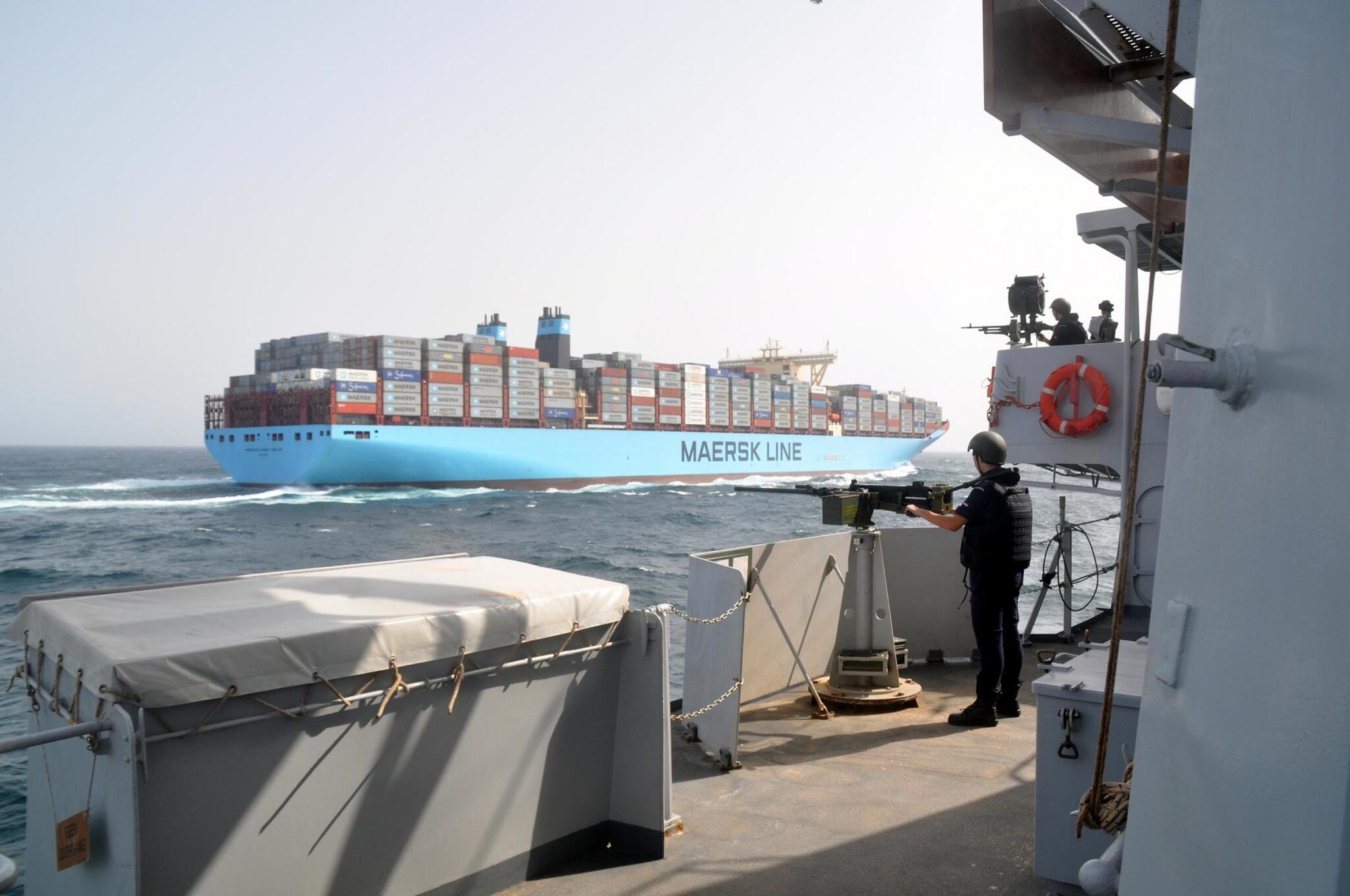Egypt Boosts Suez Security as Foiled Attack Shows Risks
Egyptian authorities moved to bolster security along the Suez Canal after a foiled attack on a ship traversing the waterway that handles about 8 percent of world trade spotlighted new threats confronting officials after Mohamed Mursi’s ouster.
The failed Aug. 31 attack on the Panama-registered Cosco (1919) Asia didn’t damage the ship or its cargo, Suez Canal Authority head Mohab Mamish said in a statement yesterday. The military dealt “decisively” with the attempt, he said, without giving details.

A convoy of container ships pass southbound along the Suez Canal towards Suez, Egypt.
Egyptian authorities moved to bolster security along the Suez Canal after a foiled attack on a ship traversing the waterway that handles about 8 percent of world trade spotlighted new threats confronting officials after Mohamed Mursi’s ouster.
The failed Aug. 31 attack on the Panama-registered Cosco (1919) Asia didn’t damage the ship or its cargo, Suez Canal Authority head Mohab Mamish said in a statement yesterday. The military dealt “decisively” with the attempt, he said, without giving details.
The maritime incident underscored the threats in the country as the military-backed government pursues an offensive against the Muslim Brotherhood and militants following Mursi’s July 3 ouster. More than 1,000 people have died, most of them supporters of the toppled Islamist leader who were killed in a single week in August amid clashes with security forces.
“Events like this increase the confusion and cause international embarrassment,” said Adel Soliman, head of the private Strategic Dialogue Forum research institute. “You have a state of turbulence in the street under which anything can happen.”
The waterway and the ships transiting it are completely secure, the state-run Middle East News Agency said today, citing Ossama Askar, commander of the Third Field Army.
State of Emergency
Authorities are already grappling at once with quashing the Brotherhood who see Mursi’s ouster as a “coup” while the military presses on with a campaign aimed at purging the strategic Sinai Peninsula of insurgents, some inspired by al-Qaeda.
After the Islamist was pushed from power, Egypt declared a state of emergency and enforced a curfew that’s since been eased — all in what has been a largely successful bid to quash the protests led by the Brotherhood and their Islamist allies.
Mursi will face trial in a Cairo criminal court along with 14 Muslim Brotherhood leaders for “inciting violence and killing” in events that occurred near the el-Itihadiya palace in Cairo on Dec. 5, news agency MENA reported, citing Prosecutor Mohamed Hisham.
Leaders Arrested
A Brotherhood call for protests on Aug. 30 fizzled because security authorities prevented demonstrators from rallying in a single location. The group said in an e-mailed statement yesterday that “the era of sleep and rest is over until we take back the revolution.”
Authorities yesterday ordered Sobhi Saleh, another Brotherhood leader, held for 15 days pending investigation after he was arrested in the Mediterranean city of Alexandria. Saleh faces allegations including inciting violence, according to the Alexandria prosecutor’s office said in a faxed statement yesterday. In all, more than 1,000 Brotherhood members, including its supreme guide, have been arrested, with some facing charges as serious as murder.
Keeping canal traffic flowing normally became a concern even before Mursi was deposed as the military stepped up security along the waterway months ago.
Canal Authority spokesman Tarek Hassanein said by phone that he didn’t have additional details and Zhang Jiqing, general manager at the executive division of the Beijing-based COSCO, didn’t return two calls outside normal business hours yesterday.
The Suez Canal and SUMED pipeline, as the link between Egypt’s ports of Ain Sukhna on the Red Sea and Sidi Kerir on the Mediterranean is known, together handled 3.8 million barrels a day of crude and products, according to 2011 data cited by the International Energy Agency. Most of that traffic was northbound.
The recent unrest has undercut Egypt’s hopes to rally an economy stunted since longtime leader Hosni Mubarak’s ouster in 2011. It’s also led some key allies, including the U.S. and European Union, to talk about withholding aid.
Early Elections
Egyptian officials have downplayed the criticism as threats and said they have contingency plans. At the same time, officials are pressing ahead with a “road map” announced by the military that sees the country amending the now-suspended constitution and holding elections by early next year.
Interim President Adly Mansour issued a decree yesterday setting up a 50-member committee charged with amending the charter, which would then be voted on in a referendum, presidency spokesman Ehab Badawy told reporters. The Salafi Nour Party will have a representative on the panel, Badawy said, adding that invitations were extended to other Islamist parties, including the Brotherhood’s political arm, the Freedom and Justice Party. Only Nour responded, he said.
http://www.bloomberg.com/news/2013-09-01/egypt-boosts-suez-security-as-foiled-attack-shows-risks.html



